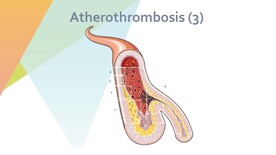Emphysema (COPD): What to Know and What to Do
Emphysema is a chronic lung condition—and a major subtype of chronic obstructive pulmonary disease (COPD)—in which the air sacs (alveoli) are damaged and enlarged. This reduces the surface area for gas exchange and makes it harder to breathe out, causing air‑trapping and hyperinflation.
Key Points at a Glance
- Progressive shortness of breath, worse with activity, is the hallmark symptom.
- Tobacco smoking is the leading cause; other risks include biomass smoke, occupational dusts/fumes, and alpha‑1 antitrypsin deficiency.
- Diagnosis is confirmed with spirometry showing airflow obstruction that persists after bronchodilator use.
- Treatment focuses on smoking cessation, inhaled bronchodilators, vaccinations, pulmonary rehabilitation, and preventing exacerbations.
Symptoms and Signs
- Shortness of breath (especially on exertion)
- Chronic cough, sometimes with sputum (often overlaps with chronic bronchitis)
- Wheeze, chest tightness
- Fatigue, unintentional weight loss with advanced disease
- Frequent “chest colds” or COPD exacerbations
Red flags needing urgent care:
– Severe breathlessness at rest, inability to speak full sentences
– Bluish lips/skin (cyanosis), confusion, extreme drowsiness
– Chest pain, coughing up blood, or sudden sharp chest pain with breathlessness (possible pneumothorax)
– High fever with worsening cough/sputum
Why It Happens (Causes and Risk Factors)
- Cigarette and other tobacco smoke (including cigars and pipes)
- Secondhand smoke; biomass fuel exposure (wood/charcoal) in poorly ventilated settings
- Occupational exposures: dusts, silica, diesel fumes, chemicals
- Air pollution
- Genetic: alpha‑1 antitrypsin deficiency (consider in early‑onset COPD, minimal smoking history, or basilar‑predominant emphysema)
What’s Going On in the Lungs (Pathophysiology)
- Destruction of alveolar walls reduces elastic recoil and surface area for oxygen/CO₂ exchange
- Air trapping and lung hyperinflation (barrel‑chest appearance) increase the work of breathing
- In advanced disease: pulmonary hypertension and right‑sided heart strain (cor pulmonale)
How It’s Diagnosed
- Spirometry: post‑bronchodilator FEV1/FVC < 0.70 confirms persistent airflow obstruction; FEV1 helps stage severity
- Diffusing capacity (DLCO) often reduced in emphysema
- Imaging: chest X‑ray may show hyperinflation; CT can show emphysema pattern (centrilobular, panacinar, paraseptal)
- Oxygen assessment: pulse oximetry; arterial blood gas in advanced disease/exacerbations
- Consider alpha‑1 antitrypsin testing in compatible cases
Treatment and Day‑to‑Day Management
- Stop smoking: the most effective step to slow progression; consider counseling plus medications (nicotine replacement, varenicline, or bupropion if appropriate)
- Vaccinations: influenza annually; pneumococcal per guidelines; COVID‑19; Tdap if not up to date
- Inhaled therapies:
- Short‑acting bronchodilator (SABA/SAMA) for quick relief
- Long‑acting bronchodilators (LABA, LAMA) for maintenance
- Add inhaled corticosteroid (with LABA/LAMA) for frequent exacerbations or eosinophilic phenotype; avoid ICS alone in COPD
- Pulmonary rehabilitation and regular physical activity; techniques such as pursed‑lip breathing
- Nutrition and weight support; address anxiety/depression
- Exacerbation plan: intensify bronchodilators; short course of oral steroids and antibiotics when criteria are met; seek care if severe
- Oxygen therapy: for chronic resting hypoxemia as prescribed; ambulatory oxygen may help some with exertional desaturation
- Procedures for selected patients: lung volume reduction surgery or endobronchial valves (upper‑lobe predominant disease), bullectomy, or lung transplant in advanced cases
- Alpha‑1 antitrypsin deficiency: specialist referral; augmentation therapy may be considered
Prevention and Risk Reduction
- Don’t smoke; avoid secondhand smoke and indoor biomass smoke
- Use protective equipment for dusts/fumes at work; improve ventilation
- Keep vaccinations current; manage comorbidities (heart disease, diabetes, anxiety)
- Stay active, maintain a healthy weight, and follow a written COPD action plan
When to Seek Medical Care
- New or worsening shortness of breath, wheeze, or cough
- Increased sputum volume or purulence, fever, or chest tightness
- Any red‑flag symptoms listed above
This article is for general education and does not replace professional medical advice. For diagnosis and treatment, consult a qualified healthcare professional and follow local clinical guidance.







